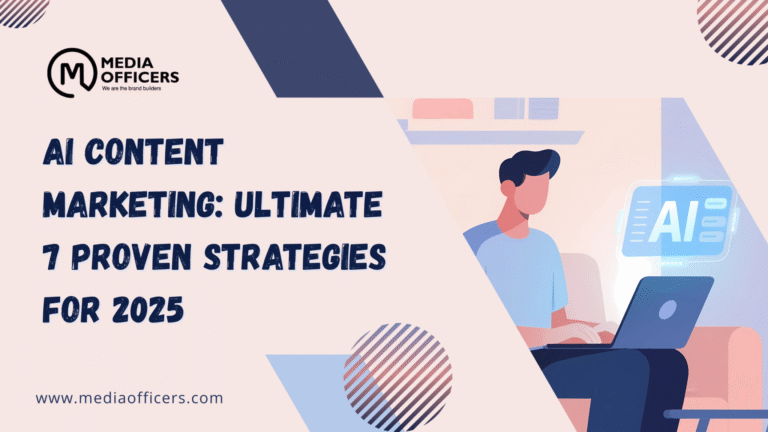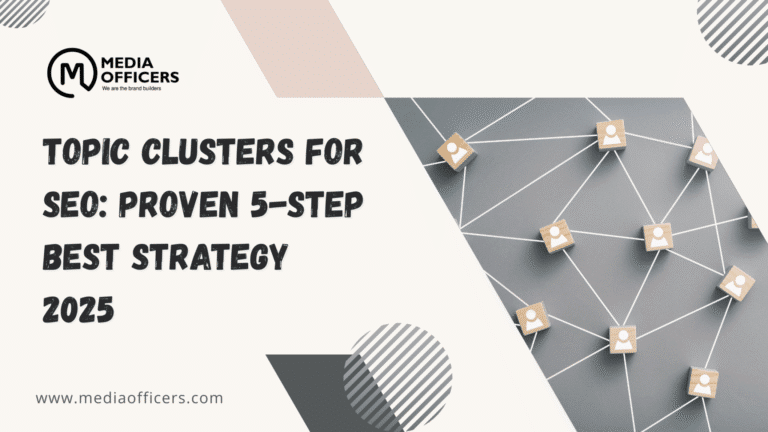Google Discover AI summaries are reshaping how users encounter trending topics. This AI-powered feature now provides previews of the stories behind the topics you follow, citing multiple publishers and offering an option to expand for more detail and direct links to the full articles. The rollout is underway in the United States, India, and South Korea after earlier testing in the U.S. this summer. A Google spokesperson confirmed that the Discover AI summaries officially launched in the U.S. in July, with expansion to other regions in the weeks that followed. For publishers, this shift signals new opportunities and new considerations about how people discover content on mobile and how traffic flows from Discovery and Search.
In parallel, Google is also introducing a companion experience in Search called the What’s new sports feed. This feature appears as a dedicated button on mobile when users search for teams or players and opens a stream of trending updates and articles. The What’s new feed aims to surface timely information without requiring users to navigate away from the search results page. Like the Google Discover AI summaries, this feature is designed to help users explore more of the web, but it also raises questions for publishers about traffic quality and reader intent. The rollout for the What’s new feed is expected to happen in the United States over the coming weeks, with broader availability likely to follow in other regions.
For publishers, both additions could change how traffic is distributed across Google surfaces. While Discover has historically been a reliable traffic source for many publishers, the emphasis on AI-generated previews means readers may see fewer full article clicks if the previews satisfy their information needs within Google’s UI. In the broader context of the industry, these developments echo prior shifts caused by AI Overviews in Google Search, which demonstrated that AI-generated summaries can influence click-through patterns. The core question is whether these AI-driven experiences increase overall engagement with topics or reduce the need to visit individual publisher pages. This uncertainty makes it critical for publishers to monitor traffic, engagement, and downstream metrics closely as the new features roll out.
The rationale Google presents is straightforward: AI-powered previews and feeds help people connect with the vast ecosystem of web content. The company claims the goal is to help users discover more of the web, not fewer pages to read. For SEO and content strategy teams, that means thinking differently about how to optimize for Google Discover AI summaries and the What’s new sports feed, while continuing to invest in high-quality, diverse news coverage across publishers. The rest of this guide dives into how these features work, what to expect in different markets, and practical steps publishers can take to adapt and benefit from the changes.
What are Google Discover AI summaries and How do they work?
The core concept behind Google Discover AI summaries is to present concise previews of trending topics you already follow, pulling in content from multiple publishers to give readers a snapshot of what’s happening. These AI-generated previews are designed to be informative and context-rich, offering a jumping-off point to read the supporting articles. Key elements include:
- AI-generated previews that summarize the latest developments around a topic.
- Multiple publishers cited within the summary to provide a balanced view.
- Expandable content that lets readers view more details and links to the linked articles.
- Continued emphasis on topical relevance and personalization based on user signals.
From an SEO perspective, the Google Discover AI summaries add a new layer to how content is surfaced in Discover and presented in mobile experiences. The previews can increase exposure for a broad range of sources, but they also shift a portion of traffic away from standard article pages if readers extract sufficient value from the previews alone. This dynamic underscores the importance of providing compelling, high-quality previews and ensuring that linked articles deliver the depth readers expect after clicking through.
Where is Google Discover AI summaries available?
The initial rollout for Google Discover AI summaries has focused on the United States, with expansion to India and South Korea after testing phases. Early signals from Google indicate a measured rollout strategy, prioritizing regions with strong mobile usage and established publisher ecosystems. If you publish content in any of these regions, you may see AI-generated previews appear next to trending topics in Discover on mobile and on iOS and Android devices.
For publishers, this means now is a critical time to audit content that appears in Discover carousels and to ensure links included in AI previews lead to rich, high-value pages on your site. Robust meta data, clear article structure, and credible sourcing will help AI previews curate accurate representations of your content. Moreover, it’s essential to monitor how Google Discover AI summaries interact with your existing SEO signals, including structured data, canonicalization, and the user experience on landing pages after readers click through.
What’s new in Google Search: the What’s new sports feed
Across Google Search, a new feature called the What’s new sports feed is being introduced to mobile search experiences. When users search for teams or players, a dedicated feed opens with trending updates and articles about the topic. The aim is to surface timely, relevant content in a way that complements traditional search results, giving readers quick access to the latest stats, analyses, and news coverage. The What’s new feed represents another strategy by Google to broaden exposure across its surfaces while keeping readers within the Google ecosystem longer. In practical terms, publishers should expect more frequent opportunities to appear in topic-based feeds, but also a higher bar for ensuring that articles are timely, accurate, and of high quality, because the feed is designed to surface the most current information on a topic.
The rollout in the U.S. is rolling out over the coming weeks, with global adoption likely to occur after the initial phase. For content teams, this means aligning editorial calendars with sports seasons and major events so that timely coverage can be effectively surfaced in the What’s new feed. It also underscores the importance of publishing concise, authoritative updates that can be quickly digestible in preview form and connected to longer, well-structured articles on your site.
Why these changes matter for publishers and SEO strategy
Google has repeatedly emphasized that AI-powered discovery tools are intended to expand access to a wide range of content, rather than forcibly funnel readers toward a single source. In practice, this means publishers may see increased visibility in Discover and in new What’s new feeds, but the path to engagement may shift from direct clicks to on-platform previews. What does this imply for your SEO strategy?
- Traffic mix shifts: Expect more readers to encounter content via Discover AI previews and What’s new feeds, with fewer direct clicks on article URLs. Tracking engagement metrics across surfaces becomes essential.
- Content quality signals: AI-generated previews rely on the quality of the source article and its metadata. Clear, well-structured content with credible sourcing improves the chance of favorable previews.
- Authoritativeness and credibility: Accurate representation in previews matters. Publishers should ensure topics are contextualized properly and that linked articles deliver reliable, fresh information.
- Editorial programming: Timely sports coverage and trending topics can gain more prominence in What’s new feeds, so editorial calendars should be aligned with real-world events and seasons.
Despite optimism about expanded reach, publishers must monitor potential reductions in direct traffic and adjust optimization strategies accordingly. The industry has already observed shifts when AI Overviews rolled out in Google Search, and the current wave of AI-enabled discovery tools could produce similar traffic reallocation dynamics. The best approach is to diversify distribution channels while continuing to invest in high-quality on-site experiences that satisfy reader intent when they arrive via any surface.
Best practices to optimize for Google Discover AI summaries and What’s new
To take advantage of the new AI-driven discovery features, consider these practical steps:
- Enhance previews with credible sourcing: Ensure your articles clearly attribute sources and present balanced perspectives. AI previews rely on credible signals to assemble Google Discover AI summaries.
- Improve on-page structure: Use clear headlines, subheadings, and structured data to help AI understand your content. Rich snippets, schema.org markup for NewsArticle, and clean metadata improve excerpt quality.
- Publish timely, durable content: For What’s new feeds, timely sports coverage matters, but evergreen context still proves valuable. A mix helps maintain visibility beyond breakout moments.
- Optimize landing pages for quick, meaningful reads: If users click through from a preview, ensure the landing page delivers the depth readers expect, with fast load times and concise Google Discover AI summaries of the main points.
- Cross-channel promotion: Promote content through newsletters, social channels, and site-wide hubs to boost recognition and brand signals that can influence previews across surfaces.
Another important practice is to monitor analytics with a focus on user intent transitions. Compare metrics such as impressions, clicks, dwell time, and bounce rate for traffic coming from Discover, What’s new, and standard search results. This multi-surface view will reveal how AI-generated previews affect engagement and where improvements are needed to convert previews into meaningful on-site interactions.
Technical considerations for publishers
Beyond editorial tweaks, there are technical steps to help Search and Discover pick up your content effectively:
- Structured data accuracy: Implement and maintain accurate NewsArticle or Article schema, including publishDate, author, and publisher information.
- Canonicalization: Use canonical URLs to prevent duplicate content issues when multiple publishers collaborate on a single topic or excerpt.
- Content freshness: Regularly update time-sensitive articles to reflect the latest developments, particularly for sports and entertainment topics that drive What’s new feeds.
- Mobile-first optimization: Ensure mobile pages load quickly and render clean previews, as Discover and What’s new are primarily mobile experiences.
By aligning technical optimization with editorial quality, publishers increase the likelihood that AI-generated previews accurately reflect their content and guide readers to the most valuable full articles on their sites.
How to measure impact and adapt over time
As Google expands AI-assisted discovery, ongoing measurement becomes essential. Key metrics to track include:
- Impressions and click-through rate (CTR) from Discover previews and What’s new feeds
- Dwell time on pages accessed via previews versus direct visits
- Engagement metrics such as scroll depth and on-site actions (comments, shares)
- Percentage of traffic that results in subscribers or repeat visitors
Set up dashboards that segment traffic by surface (Discover, Search, What’s new) to understand where value is coming from. If previews consistently drive lower CTR but higher dwell time, a strategy may emphasize richer previews and deeper on-page content to maximize value from each visitor.
Future outlook: what publishers should prepare for
The combination of Google Discover AI summaries and the What’s new sports feed signals a broader shift toward AI-assisted discovery across Google’s ecosystem. For publishers, this means a more dynamic surface strategy, with opportunities to reach readers earlier in the information journey and to reinforce brand coverage through diverse citations in AI previews. It also means staying nimble as Google tests and refines how AI previews are formed and presented. The ongoing challenge will be balancing visibility across surfaces with sustainable engagement on your own site. A thoughtful approach that prioritizes credible summaries, high-quality content, and a strong on-site reading experience will help publishers thrive as discovery tools evolve.
Frequently Asked Questions
What exactly are Google Discover AI summaries?
They are AI-generated previews of trending topics in Google Discover that cite multiple publishers and offer expandable details and direct article links, designed to help users quickly understand what’s happening around a topic.
Where is this feature available?
The Google Discover AI summaries are available in the United States, India, and South Korea after earlier testing in the U.S. This is part of a phased rollout that may expand to additional regions over time.
What is the What’s new sports feed in Search?
What’s new is a mobile-specific feature that opens a feed of trending updates and articles when you search for teams or players, providing a fast way to access the latest content.
How should publishers optimize for these features?
Focus on credible previews with accurate sourcing, improve on-page structure with schema markup, ensure fast mobile loading, publish timely sports content, and monitor traffic across Discover and What’s new to understand impact and adjust strategies accordingly.
Conclusion
In summary, Google Discover AI summaries and the What’s new sports feed in Search mark a notable evolution in how content is surfaced and consumed. While these features promise greater reach and streamlined discovery, they also require publishers to adapt by delivering high-quality previews, credible sourcing, and fast, engaging on-site experiences. By embracing a multi-surface SEO strategy that aligns editorial planning with technical optimization, publishers can maximize visibility across Discover and Search while maintaining strong engagement on their own sites. The 2025 landscape is clear: AI-driven discovery is here to stay, and proactive preparation will determine which publishers thrive in this new era of Google surfaces.





